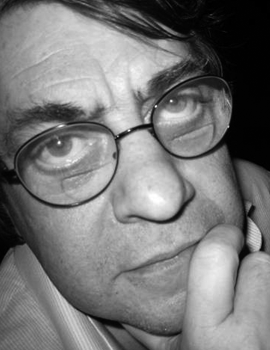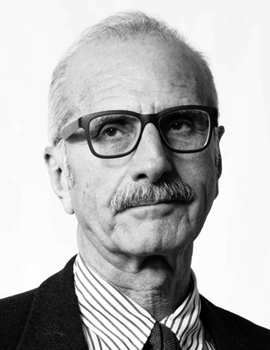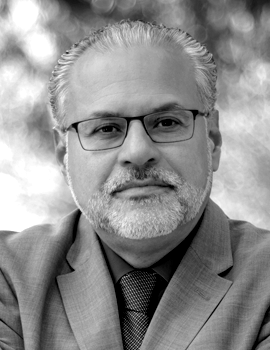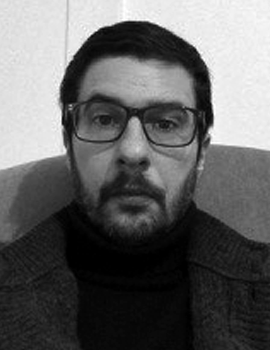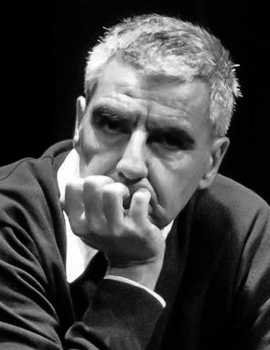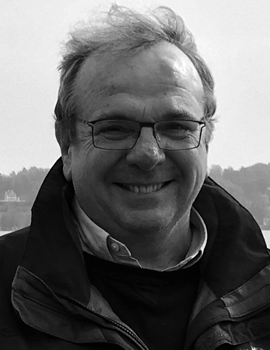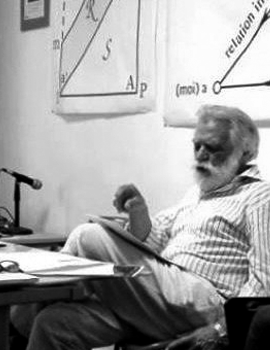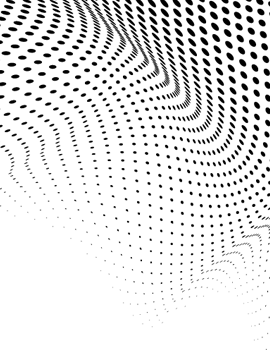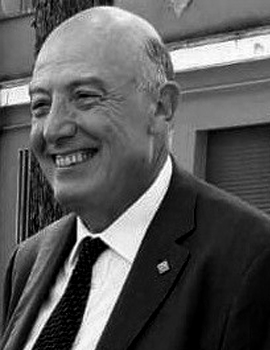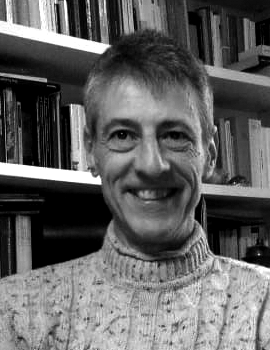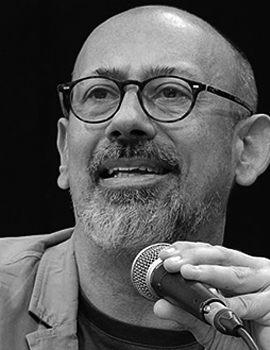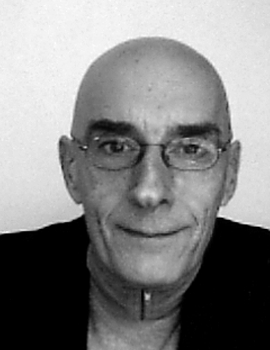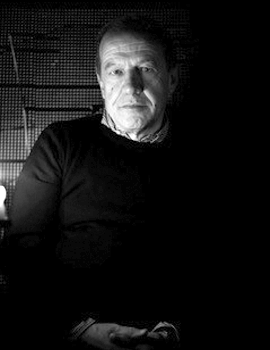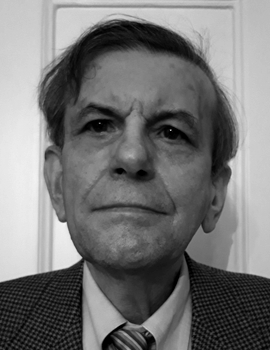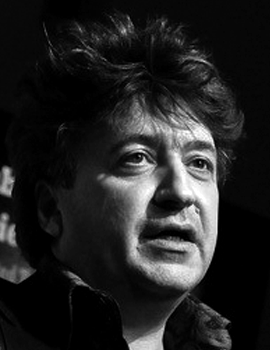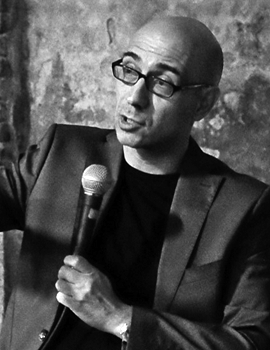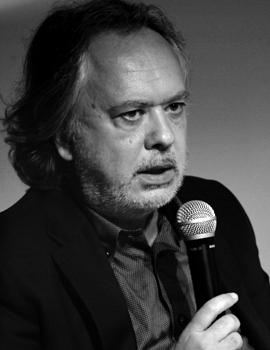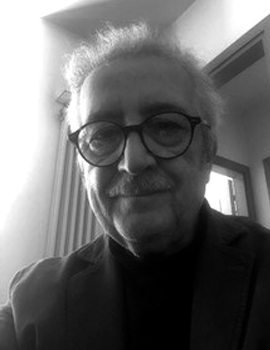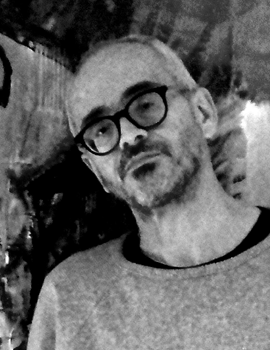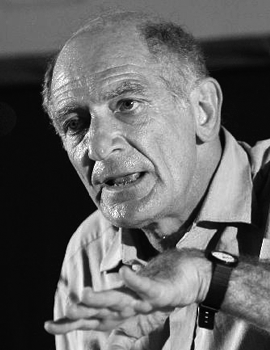“A Mystery of Mysteries!”
A Mystery of Mysteries!
This phrase forms the last verse of a poem by Edgar Allen Poe and it is the title under which I would like to make the following reflections. What hovers over this phrase is of course the very title of the poem which is about the one and the many: ‘Spirits of the Dead’.
What is Massenpsychologie und ‘Ich’-Analysis?
How to remember after 100 years a text which is about archaic memory of the emergence of the mass?
It would be simplistic to say that this text was the child of its times in which many thinkers became concerned to analyse the crowds that the contemporary socio-economic and political processes had released. It is also not enough to say as many have done that given its prefiguration of fascism in the text we are the inheritors of Massenpsychology. Rather, the text is itself the child of archaic times as we will see.
Freud’s Massenpsychologie sought to explain the fact that between human beings there are more than familial relations that have achieved a significant measure of regularity. Hence Freud set aside le Bon and others as he found it insufficient to dwell on fleeting crowds or rational cooperations among the many as when passers-by rapidly gather to lift a bus that has fallen into the valley. Rather be investigated the enduring bonds of a community that is experienced and known as such by its members. This is what Freud called the mass and defined it as having something in common, which would be the basis for the very possibility of any formation of an enduring community, and also of many different kinds of mass formation. Then we must state Freud’s full project and theoretical proposal regarding the mass as: the regularity of having something in common with many others. It evinces at once the trait that many people are similar to each other in having the same something and the trait that this common something is not of the same kind as any of these similar people.
Thy soul shall find itself alone
A regularity refers to activities and processes that are more or less identical to each other in their repetitions, such as sleeping at night, dreaming and waking up in the morning. A regularity is specified by a rule or componential law, and its interactive relation with other regularities is itself comprehended by a greater regularity that is specified by a comprehending law. (Since Freud and his reception have mostly focussed on the mass as the model and basic structure of all community, they pre-understand the question of how one regularity relates to another as the question of how one mass relates to another where both are fundamentally structured in the same way but with certain differences.
This pre-understanding obtains either a concentric model of smaller masses nestled in larger ones, or the friend-enemy model. But neither exhaust the question of the co-existence and inter-relation of many regularities, a question entailed by any genuine thinking of the togetherness of many or of mit-sein.) Through regularities humans and things are held in relations of means and ends. Their interrelations are held by forms that enable specific functions, but both the forms and the functions are modifiable.
Modification takes place in two ways.
First, by discovering new homologies or powers in existing forms and functions, where homology must be understood as the discernment of the kinds and degrees of articulations available in things such that the same object can be constructed under different regularities to give different objectivities.
Second, modifications take place by new analogies which reassign the forms, functions and their homologies. When existing functions are appropriated as means for a new purpose or end, they do not always lose their earlier form or function but take new ones under different rules. This entails the introduction of a law to comprehend newly interrelated given regularities into an objectivity of some duration.
Up until Massenpsychologie, Psychoanalysis presented a psychic apparatus of an individual as a system comprising the basic functions of object-cathexis, identification, and repression, which yielded a restricted set of enduring forms: the id, ego, and superego; these forms and functions could enter into variable regularities or psychic formations and their articulations such as dreams, jokes, neuroses of many kinds, melancholia. The restriction of the basic functions, especially by way of the oral phase and the oedipal phase implies that in the Freudian system (up to a certain point) this dynamic of proliferating of psychic forms arises nevertheless from his discovery of a distinct homology in the psychic apparatus – Eros. Accordingly there is an advance restriction the analogical re-assignation of existing forms and functions of the id, ego and the superego (as seen in new object-choices, secondary identifications, introjection, sadism etc.).
Be silent in that solitude,
Which is not loneliness—for then
Freud defines the psychic structure of a mass thus: “a primary mass is a number of individuals who have set one and the same object in place of their ‘I’-ideal and who have consequently identified with one another in terms of their ‘I’.”[1]
We must attend to the components and functions of this regularity called mass. The minimal necessary components of a possible mass that is so defined are revealed by Freud’s text as follows:
- identification (the dynamics of libidinal attachment in the psychic apparatus comprising the id, ego or ‘I’, and superego or ‘I’-ideal),
- regression (the correlations of ‘I’, the ‘I’-ideal and object),
- the primal horde-father formation (history of the primeval family),
- myth as archaic inheritance.
Among these four components, a theory of identification and regression (or individual psychology as Freud calls it here) was already developed in his preceding works on psychanalysis and metapsychology; the third, that is, the structure of primal horde (also abbreviated for convenience as mass psychology) was introduced in this book itself; while the last, that is, myth, whose uses are scattered all over the oeuvre of Freud, now finds a new and central function in the form of “archaic inheritance.”
When these components are arranged in different ways, i.e., comprehended by a different law, a different kind of mass comes about, whether with or without a leader, with or without increased organisation, but always tending towards regression.
For many individuals to set the same object in place of their ‘I’-ideal, there must have already been set into motion the process whereby each individual’s ‘I’ finds itself significantly distanced and inferior to his ‘I’-ideal. In other words, there is a homology between individual psychology and the mass, whereby the mass arise from conditions obtaining in the ontogenetically early process of the detachment of ‘I’ from id and the emergence of the ‘I’-ideal as “a level within the ego” whose function is repression, reality-testing, punishing, controlling and directing.
This process is triggered by the oedipal father such that the ambivalent first identifications (with both parents) in the pre-oedipal stage lead to a post-oedipal re-assignation of libidinal attachments to new object-choices and secondary identification. Thereby the ‘I’-ideal is formed in which the function “to have” an object (mother) and the function “to be like” or identify with an example/model (the father) are both re-distributed, and moreover, the function of identification splits into simultaneous affection and hate towards the example.[2]
But the homological development of the mass from the individual cannot be clearly discerned until it can be explained how the same object can displace the highly elevated ‘I’-ideal of so many ‘I’s, and thus how each ‘I’ identifies with the many others in the same way, that is, how each ‘I’ identifies with the way the others identify. (Freud noted that it is the function of the ‘I’-ideal vis-à-vis the ‘I’ that is relevant here, and even meagre objects can often displace this ‘I’-ideal and acquire its aura).
We can formulate his question as: what is the origin of the sameness of the identification process in many ‘I’s?
The spirits of the dead who stood
In life before thee are again
In death around thee—and their will
Shall overshadow thee: be still
Massenpsychologie was the outcome of Freud’s search for this missing origin and he sought it in the very beginnings of identification, that is, phylogenetic explorations of the primeval family.
His account of the primal father of the primal horde aimed to explain the homology of the identifications repeating across human history as well as in the ontogeny which psychoanalysis had already explained before Massenpsychologie was written. Freud found that we could establish that primary mass was homological to the first identifications specified by individual psychology, only once we establish that the split between the ‘I’ and ‘I’-ideal in turn was homological to the identifications specified by the oldest/first family or the primal mass. In this way Freud could declare, in chapter X, both that
“mass psychology is the oldest psychology of the human race;”
(also “there has to be the possibility of turning mass psychology into individual psychology”)
and that the primal father triggered the first mass psychology:
“He forced them, so to speak, into mass psychology.”[3]
The paradigmatic weakness and adulation of the ‘I’ with respect to its ‘I’-ideal is induced by the primal father’s force applied on his fear-stricken sons, first converting their fear and goal-inhibited eros towards the father (wishing for his love and protection) and their sense of equality towards each other (identifying with each other’s equally abject position).
There is neither contradiction nor a circular originarity in Freud’s account, rather there is a difference in the levels of the origins of each stage of identification. Once we behold the homologies of what we can call the identification-function presented by Freud, we are forced here to look for even older origin than either individual or mass psychology, the origin of both.
In Massenpsychology, chapter VII is devoted to identification of which Freud says that “identification is the earliest and most natural form of emotional attachment.” And in subsequent chapters Freud extensively elaborates the homology between love, hypnosis and the “fascination” operating in mass psychology.
Thus, identification in mass psychology precedes individual psychology, just as identification in the pre-oedipal stage precedes the formation of the ‘I’-ideal and the secondary identifications and idealizations.
The father, the mass, and the individual who is its “residue” (we will soon consider the father of myth and nostalgia in the Postscript to Massenpsychology) are homologues.
The search of their common origin now rests on our understanding how, for Freud, identification prevails over uninhibited eros which Beyond the Pleasure Principle had already clarified as more than sex-drive, rather as life-drive. For we must remember that Freud presents its full form as not merely an imposition from the primal father but as “passive masochism,” an “aptitude for reviving such ancient situations,” and what is the important, as “archaic inheritance.”[4]
Now are thoughts thou shalt not banish,
Now are visions ne’er to vanish;
From thy spirit shall they pass
No more
How, according to the text, does archaic inheritance travel, in other words, how is it conserved across phylogeny and ontogeny?
The well-known answer is – by means of a very special myth (the last item in our list). Now, the father’s death is the condition for nostalgia and Freud does not tell us why the primal horde “came together one day, killing and dismembering him.”
The acephalous plurality of many father-run families already feels “nostalgic deprivation” but only one of them acts of it by making a false and idealising myth in which a hero killed the father. which one, why?
There is the psychological reason given by Freud about the psychic reasons for the poet of being the youngest son. But what is more important is that this myth is itself born out of this same nostalgia.
Thus Freud suggests that the poet must be the hero – by fabricating the myth in obedience with the nostalgia, he fictively produces himself as the new father who reigns in the name of the old father. The epic poem first expresses the nostalgia that everyone feels. The hero displaces the primal father in the pre-existing position of the ‘i-ideal. The act of fabrication of the story of the killing is analogous to the act of killing.
Hence, Freud proposes that “Myth, in other words, is the step by which the individual exits from mass psychology. The fabricator of the myth is the first one who acts under the nostalgia or the “compulsive nature of mass psychology.”
Without any other evidence of the father’s killing, the myth alone lives to tell the tale which it alone has first conceived. It is possible that the dead father is in fact non-existent, only a creature of myths that obey the psychic compulsion of nostalgia.
It is even possible that Freud is only telling us a myth about there ever being a primal father and an epic poet, and perhaps the killing and re-erection of the non-existent father indicates that the nostalgia is oriented by a non-existent thing.
Perhaps, Freud is the hero who is the poet, and like a serpent whose mouth grows out its own tail, nostalgia only shuttles between these two origins and two myths (the one told by the poet and the other told by Freud. In his reading of the version of parricide as it occurs in Totem and Taboo Derrida taught us to discern this “the mark of fictive narrativity (fiction of narration as well as fiction as narration).”[5]
What if there is no such myth of heroic parricide in the epic poem but rather Freud is offering us his own invention? It is significant that Freud elaborates this role of myth only after the very end of chapter XI, in the postscript section B, after positing the individual as the homologue of the mass. As we will see, the question of the existence or the non-existence of the father is irrelevant, and myth itself is not the ground of the archaic inheritance which leads from mass to individual and back to mass psychology.
The reason is that if we are to be a mass because each of our ‘I’s has an addiction to authority and a longing to be dominated, it implies that the structure of nostalgia already inhabits individual psychology and relates the ‘I’ and the ‘I’-ideal. It implies that any new father (poet/hero or not) is readily accepted as such by the nostalgic disintegrated mass of fathers since they are already all longing to identify with the position of the father, their own ‘I’-ideal.
We must instead attend to the syntax of Freud’s definition of the primary mass which repeats in the individual and in other kinds of mass: many ‘I’s “set up the same object in place of their ‘I’-ideal.” The active voice in this locution indicates a psychic agency, evidently unconscious, that seeks and finds objects to occupy the position of their ‘I’-ideal, displacing the ‘I’-ideal. These objects are certain other individuals who often have none of the qualities of a dominating primal father. We do it to ourselves. We are characterised by this addiction and longing, this nostalgia is a form of compulsion. It is in Freud’s theory of compulsion rather than in myth, that we will find the ground of Massenpsychologie.
The night, tho’ clear, shall frown—
And the stars shall look not down
From their high thrones in the heaven,
With light like Hope to mortals given—
But their red orbs, without beam,
To thy weariness shall seem
As a burning and a fever
Which would cling to thee for ever.
We must look to the identification-function to understand “uncanny, compulsive nature of mass formation.”[6] The explanations comes to us in the last chapter XI or the text:
“Each of the mental distinctions that have become known to us has the effect of making the mental function more difficult, increasing its fragility and potentially triggering a failure of that function, i.e. an illness. Thus in being born we took the step from utterly self-sufficient narcissism to perception of a changeable outside world and the beginning of object-finding, and associated with that is the fact that we do not permanently tolerate the new state, that we periodically undo it and in sleep return to the previous state of dullness and object-avoidance.”[7]
Even before libidinal attachments, object-choices, and goal-inhibition there is self-sufficiency (primary narcissism) and the compulsion to return to the previous state – regression. Giving up the love-object in favour of the primal father (mass-ideal) is only a re-articulation of object-avoidance, that is, the return to the previous state. Compulsive mass formation has then homologically developed in mankind, the horde animal, from the pre-existing tendency of regression even in the new-born to withdraw from the world of stimuli, and from the inherent instabilities and fragilities of all the psychic regularities that unfold in ontogeny.
And thus the last chapter of Massenpsychologie concludes by means of the thesis in Beyond the Pleasure Principle which first gave us the definition of “drive” itself as: “a powerful tendency inherent in every living organism to restore a prior state, which prior state the organism was compelled to relinquish due to the disruptive influence of external forces.”[8]
Drive is death drive, eros and other life drives are “partial drives”:
“all organic drives are conservative, historically acquired, and predisposed to regression and the restoration of prior states […]”
“The conservative organic drives have assimilated every one of these externally imposed modifications of the organism’s life-cycle and duly preserved them in order to repeat them, and therefore inevitably give the misleading impression of being forces bent on change and progress, whereas they merely seek to achieve an old goal by new means as well as old. And this ultimate goal of all organic striving may be equally susceptible of definition. It would contradict the conservative nature of drives if it were the goal of life to achieve a state never previously attained to. Rather, it must aspire to an old state, a primordial state from which it once departed, and to which via all the circuitous byways of development it strives to return. If we may reasonably suppose, on the basis of all our experience without exception, that every living thing dies – reverts to the inorganic – for intrinsic reasons, then we can only say that the goal of all life is death […]”
The hypothesis of the death drive provides the theory of the regressive tendency – compulsion – that underpins the homology between mass and individual psychology. Thus we understand Freud’s proposal of an “addiction to authority” and “wish to be dominated.” Identification and object-love are themselves both homological articulations of eros which is itself the homological articulation of the death drive. Partial drives of self-assertion, domination, and self-preservation (which constitute the ambivalence of the ambivalent object-choices and identifications of the oral stage) are isolations of the same function: to restore the prior state, to return to stability, to “procure” the goal of death. As functional isolations of Thanatos they have achieved a high degree of regularity at a stage even before higher animals developed from lower organisms.[9]
They are archaic permanent modifications which nevertheless serve the same function by a circuitous route. All goals – of pleasure and unpleasure – too are explained in Beyond the Pleasure Principle as halting stations of the primordial goal of all life, death.
Freud’s definition of mass in terms of the components and functions which we listed in the beginning comes to rest on grasping their interplay under the dominion of something beyond the pleasure and reality principles (one being the modification of the other) – the dominion of regression or the return principle, if you like, by which identification and abjection are our archaic inheritance. Both the individual and the mass psychology are homologous to the death drive. Thanatos is the origin of identification, the origin of “having something in common.” Their ancestry is much older than even the primal father (who summons such terrifying destructive force). It is as old as the origin of life itself as Freud hypothesized it in BPP.
The will that makes us still, as Poe’s poem tells us, is the will of the spirits of the dead which itself is derived from the will of the death drive.
Freud knew that a theory of how man is bonded into community must be grounded in a theory of force, and he had developed just this new theory of force in the form of “drive” in Beyond the Pleasure Principle.
We cannot read Massenpsychologie without Beyond the Pleasure Principle.
Equally, without Massenpsychologie, the theory of death in BPP could not have communed with the spirits of the dead. Of course, we must add that Massenpsychologie had to be written since the homological power of drives theorised in Beyond the Pleasure Principle must be shown to work in the whole range of psychic and social phenomena of love, hypnosis, melancholia, neuroses, and especially the mass. The world must be reinterpreted and made consistent with the origin of life (and of life-drives) posited in Beyond the Pleasure Principle.
They all must have a clearly discernible shared ancestry. It is the necessary step for Freud to revise his previous psychological findings in the light of his latest metapsychological findings concerning death drive, and to integrate BPP with the rest of psychoanalytic theory and practice.[10]
And the mist upon the hill,
Shadowy—shadowy—yet unbroken,
Is a symbol and a token —
How it hangs upon the trees,
A mystery of mysteries! —
Massenpsychologie is the progeny of Beyond the Pleasure Principle.
The spirits of the dead never “pass from” the ‘I’ but unceasingly pass through the primordial death drive all the way to every ‘I’, and for this they do not depend in the last instance on remembrances of poets or myths that would supplement a non-existent origin (though such myths exist and perform certain functions that Derrida had discussed and we will not go into it here; suffice it so say that like everything else they too are capable of polynomia, the possibility that the same thing can be host to several different regularities by means of new analogies and the discovery of multiple homologies in them). We must encounter myth in Freud in a different way, which is not to be found in Massenpsychologie at all, but rather in its ground which is Beyond the Pleasure Principle.
Nowhere does Freud resort to inventing as well as citing myth in a more decisive way than in Beyond the Pleasure Principle, namely to support his thesis that the goal of life is death. His speculations on the event in which life originated, the death drive was formed in the oldest, simplest organism, and then continue to rule over the development of higher life forms is grounded in two important myths. First, his account of life’s origin is itself an invented foundation myth in which inorganic matter was “aroused” to life by an external force.
The assumptions are consistent with the definition of “drive” as a tendency to return to a prior state although they would not have been supported by the biology even of his own times. The second is when the evolution of higher animals with sexual reproduction clearly appears to contradict his thesis that the death drive continues on in them from unicellular organisms which reproduce through division. Freud solves the difficulty builds on the myth of the androgyne in Plato’s Symposium, and the longing of the two halves for each other after Zeus cut the androgyne into two. This is the ground of nostalgia, running from BPP to Massenpsychologie.
To be fair, the text contains numerous admissions of the shaky grounds for his hypothesis; nevertheless, making its ways through them is the increasingly assured construction of the death drive. In the last two chapters it is applied to the psychic apparatus yielding the revisions of the libido, the narcissistic libido and thesis of primary masochism (the representative of death drive in the id).
Why does the poet, however, speak in these verses of the stilling presence of death as hovering outside us, a little way off, neither too far nor too close, hanging uncannily like a shadowy mist? We are only told that this mist is in fact a symbol and token. Of what? At least it is clear that the poet would like you – which is all of us readers — to take the mist as a symbol of something else. The last verse tell us what that is: a mystery of mysteries, in other words, the mystery of the fact that there are mysteries. Which are these? – the very ones of which the previous stanzas were just now speaking – the returning spirits of the dead, and the myths that carry them to us. Then the poet is asking us to take the mist not as the mass of death pressing on us, but a mystery, that is, go to them with curiosity rather than credulity.
This is how we must go to Freud again, and then something else about myth and mass begins to glimmer, which is of extreme significance in politics. There is an important step he takes while drawing the analogy between hypnosis and mass psychology (which we now know to be homologues of identification). He alerts us to the fact that there is a resistance to suggestion in hypnosis that many including he himself had as they rebelled against the hypnotist’s rebuke “vous contresuggesionez!”[11]
This resistance allows the hypnosis session to be treated as a game. In a remark made in the paragraph just before the one that presents the definition of mass in chapter VIII he explains that
“the moral conscience of the hypnotized person may often prove resistant, even where the person is otherwise wholly suggestible and submissive…. an awareness may be retained that this is only a game, an unreal reproduction of a different situation – one of very much greater vital significance.”
There is, in fact, a relation between these observations and Freud’s clear hint in three places that in army and church as well as other mass forms today, what we have is “the pretence that the leader loves each and every individual in a fair and equal way.”[12]
Above all, the Postscript B clearly indicates that the “lie of the heroic myth culminates in deification of the hero.”
Pretence, game, myth, and lie – forms with family resemblance, all of which beckon us to explore the mystery of how mass and leaders are in fact related. Rather, the mystery is that the relation is one of identification, but the mystery of the mystery is something else. It is that what appears as identification or its psychic product could be a pretence, game, myth, and lie. And where better to learn than in works of the philosopher from whom Freud borrowed his myth in Beyond the Pleasure Principle? Not only did Plato use myths in several ways in several dialogues – some invented by him, others retold, yet others appropriated from the most diverse mentioned and unmentioned sources – but he also gave a theory of myth that itself locates their emotive power in narration and identification. Contending with myths he could not but affirm what they already were in the hands of poets and playwrights before him, with their great variations on the shared cornucopia of migrant stories, migrant heroes and migrant gods.
Most instructive is his candour in The Republic Bk 6 that suitably modified myths can function well as an effective lie in politics: “We want one single, grand lie,” he says, “which will be believed by everybody – including the rulers, ideally, but failing that the rest of the city.” He declared more candidly what was already known before: that it was a testimony to their emotive power that one could play with rhapsodizing, dramatizing, deploying, editing, even censoring myths, and of course, philosophizing with them. And not least because myths necessarily circulate en masse as they already did in antiquity before Plato.
Contrary to this awareness, when myth qua myth is given a primary status with respect to mit-sein, this conception and function of “myth” is exactly that which Jean-Luc Nancy and Philippe Lacoue-Labarthe elaborated in the essay “The Nazi myth”, especially when they show that “It is because myth can be defined as an identificatory mechanism that racist ideology became bound up in the construction of myth.”
In this regard, we should attend carefully to what Jean-Luc Nancy has said in the recent article titled “Demosophia” published in the inaugural issue of the journal Philosophy World Democracy. Demosophia: where philosophy and democracy form the double of an as yet non-existent
“true thought of the people, by them and for them, [which] should above all hold in respect philocratia which is one of the most powerful factors of human conduct. This doesn’t mean that no power is needed, but that the love of power must be controlled, channeled, instructed according to another love, that of life and speech.”
Then if, as we found, the myth in Massenpsychology is hardly relevant to explaining mass psychology, and the two myths in Beyond the Pleasure Principle could hardly have convinced anyone of the existence of the death drive, what still concerns us in the relation of myth and mass in Freud is the consequence of agreeing with his particular definition of mass and of nostalgia. Rather, we can say that this theory of father, mass and nostalgia in terms of identification-function is itself a myth. Its peculiarity is that it prevents us from discerning the constructions of masses as well as of leaders, One only needs to refer to Shakespeare’s roman tragedies to recognise the activities that go on behind the establishing of a myth, setting of an object in the position of a leader – those who do so are often other centres of power, institutions like the media, influencers, financiers, and above all information technology corporations which can engender in the many a feeling of identification with each other or a adoration of a leader.
Further, there are many ways of installing leaders whom no mass desires but who still represent it in many formal and practical ways. Such a one is the current prime minister of India who received the vote of only 17% of the voting population. In a revealing moment sometime back, he held massive public programmes with the then US president Donald Trump, and during one joint press conference, Trump declared that Modi had done so well that “he could be the father of India, we can call him that”. It is that easily conceivable for a leader to replace the father of another nation with a new father – and It is even more revealing that in this instance, the one who nominates the father was himself a reality TV star, and finally he clarified what he meant by ‘father’ when likened Modi to Elvis.[13]
That is what the figure of the father in mass psychology is, a performer.
There is not one but multiple homologies that develop into a community.
Like myths we could think of communities as en masse: communities are braided into each other by many more kinds of relations than the conflictual model suggests. Rather, these relations make it impossible to find the borders or the identity of “a” community as though it were specified by “a” type of internal bond among its members. Emotional attachments or the father-function play only a limited role and in only some of them. The construction and designation of myths as archaic inheritance is just one among the other components of a regularity in which myth itself is established as an effect. Only by perceiving the inter-relationship of myth with the other components of a system can we grasp why some people identify with the same myth or leader.
This identification, nevertheless does not tell us enough about that particular situation. The idea that either masses or communities are shaped by a deep “need for a powerful leader”[14] or for a myth is itself a myth. Holding either myth or emotional identification ( in other words, having in common) as an explanation of community brings the disadvantage since they act as screen such that we cannot see those activities behind it whereby the conditions of politics in a given situation are established by those who have the means to do so.
What are their interests and desires of these men?
Instead of searching for the psychic mechanisms through which many people find a common mass-ideal, we need a theory of psychoanalysis that can inquire into the and the pathologies of those like Adolph Eichmann who appear neither as the mass nor as the leader, but those few who are the agents through which the effect of mass-leader is produced and maintained.
They need not even be individuals but bureaucracies, police states, corporations like News Corp and Facebook, cults like QAnon, and cadre based organisations like the RSS in India.
Arendt’s book as well as the essay “The Nazi myth” are probes into the psyche of those who construct myths and who have the larger share of resources to determine the law of a regularity in politics in which something resembling a mass is formed.
We are ushered into a different question of mass once it is redefined as the effect of arrangements of power, for which we can adopt the view that all arrangements of power are hoaxes, behind which there are always other different ones. Hoax produces the feeling of truth, both in being carried out and in their unravelling, which gives rise to complications that we cannot address here. But it enables us to see that a hoax in politics takes many men to invent and sustain, for politics is the responsibility of the many. In the place of the Freudian theory of mass which makes identification and idealization the destiny of each of us, the politics and any form of being-with would then appear as our collective responsibility.
If the significance of Massenpsychologie in Freud’s oeuvre was to bridges the primordial time of the inorganic state, the protozoa, and the spawning salmon with the time of his contemporaries, then the gravity that gathers us on this centenary is to consider whether and if at all we should extend this bridge to our own times and to futures awaiting us.
[1] Massenpsychologie VIII
[2] The Ego and the Id III
[3] It must be read in full: “we can imagine only one thing here: the primal father had prevented his sons from satisfying their direct sexual tendencies, forcing them into abstinence and consequently into the emotional attachments to himself and to one another that were able to proceed from the tendencies with inhibited sexual goals. He forced them, so to speak, into mass psychology. His sexual jealousy and intolerance ultimately became the ground and reason for mass psychology.”
[4] Massenpsychologie X
[5] “Demanding and denying the story, this quasi-event bears the mark of fictive narrativity (fiction of narration as well as fiction as narration: fictive narration as the simulacrum of narration and not only as the narration of an imaginary history). It is the origin of literature at the same time as the origin of law—like the dead father, a story told, a spreading rumor, without author or end, but an ineluctable and unforgettable story. Whether or not it is fantastic, whether or not it has arisen from the imagination, even the transcendental imagination, and whether it states or silences the origin of the fantasy, this in no way diminishes the imperious necessity of what it tells, its law.”; “Before the Law” in Acts of Literature.
[6] Massenpsychologie X
[7] Massenpsychologie XI
[8] Beyond the Pleasure Principle V.
[9] Beyond the Pleasure Principle VI.
[10] We see the results of this integration when, echoing BPP, The Ego and the ID claims that “By forming an ideal, the ego takes unto itself everything in the id that has been created by biology or left behind by the travails of the human race, and re-experiences it on an individual level. As a result of the way it is formed, the ego-ideal has the most abundant links to the phylogenetic acquest, the archaic inheritance, that is intrinsic to everyone. Thanks to the forming of an ideal, those elements within the individual psyche that once belonged to the deepest depths become – in terms of our scheme of values – the very loftiest aspects of the human soul” – The Ego and the Id III. It is only in the combined light of BPP and Massenpsychologie that Freud further encounters the troublesome question whether this tendency to return/regress/repress to which we owe religion and morality was first inherited in the ‘I’ of primitive man (that is, through the father-complex) or even before that in the ‘id’. And drawing on both BPP and Massenpsychologie he says that we need to worry about priority here because it is in fact going back to a much prior state the very detachment of ‘I’ from id is older than primitive man, as old as “organisms that are far simpler still” and that the ‘I’-ideal has “its very origins in the experiences that led to totemism,” that is, in the primal horde: “was it the ego of primitive man that at some point acquired religion and morality as a consequence of the father-complex, or was it his id? […]. We are obliged to attribute the differentiation of ego and id not merely to primitive man, but to organisms that are far simpler still, since it is a necessary manifestation of the influence exerted by the external world. As for the super-ego, we described it as having its very origins in the experiences that led to totemism; the question whether it was the ego or the id that underwent those experiences and acquired moral attributes quickly proves to be pointless” – The Ego and the Id III.
[11] Massenpsychologie X.
[12] Massenpsychologie X
[13] In all of this we must not forget that the old father M. K. Gandhi was himself in siginficant measure the product of extensive media publicity (and most significant contribution to politics was to inhibit the tide of anti-caste movements, and instead to consolidate upper-caste rule under the identity of “Hindu religion” establish the Congress party as the caretakers of upper caste interests. The upper castes are less than 10% of India’s population.
[14] Massenpsychologie

